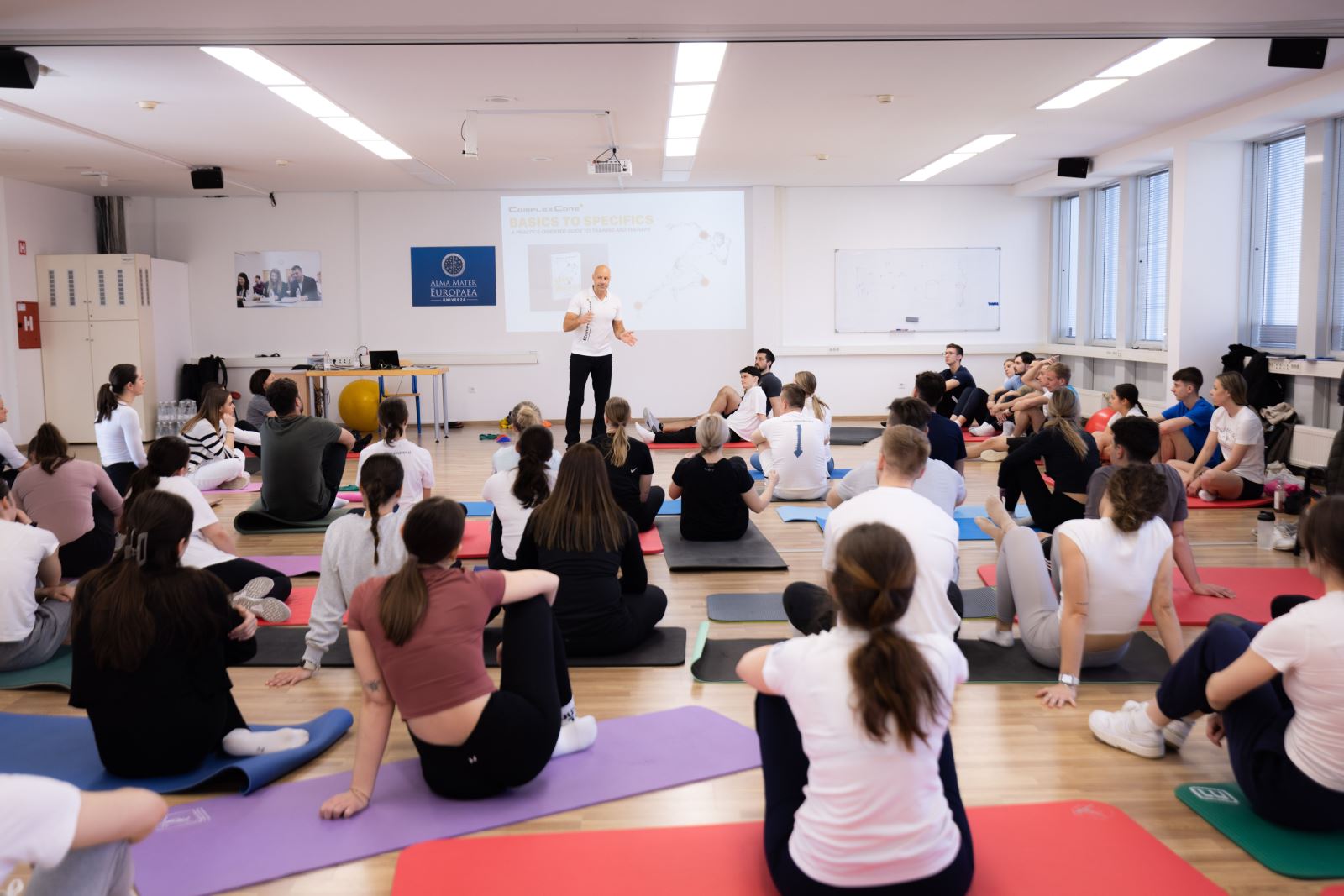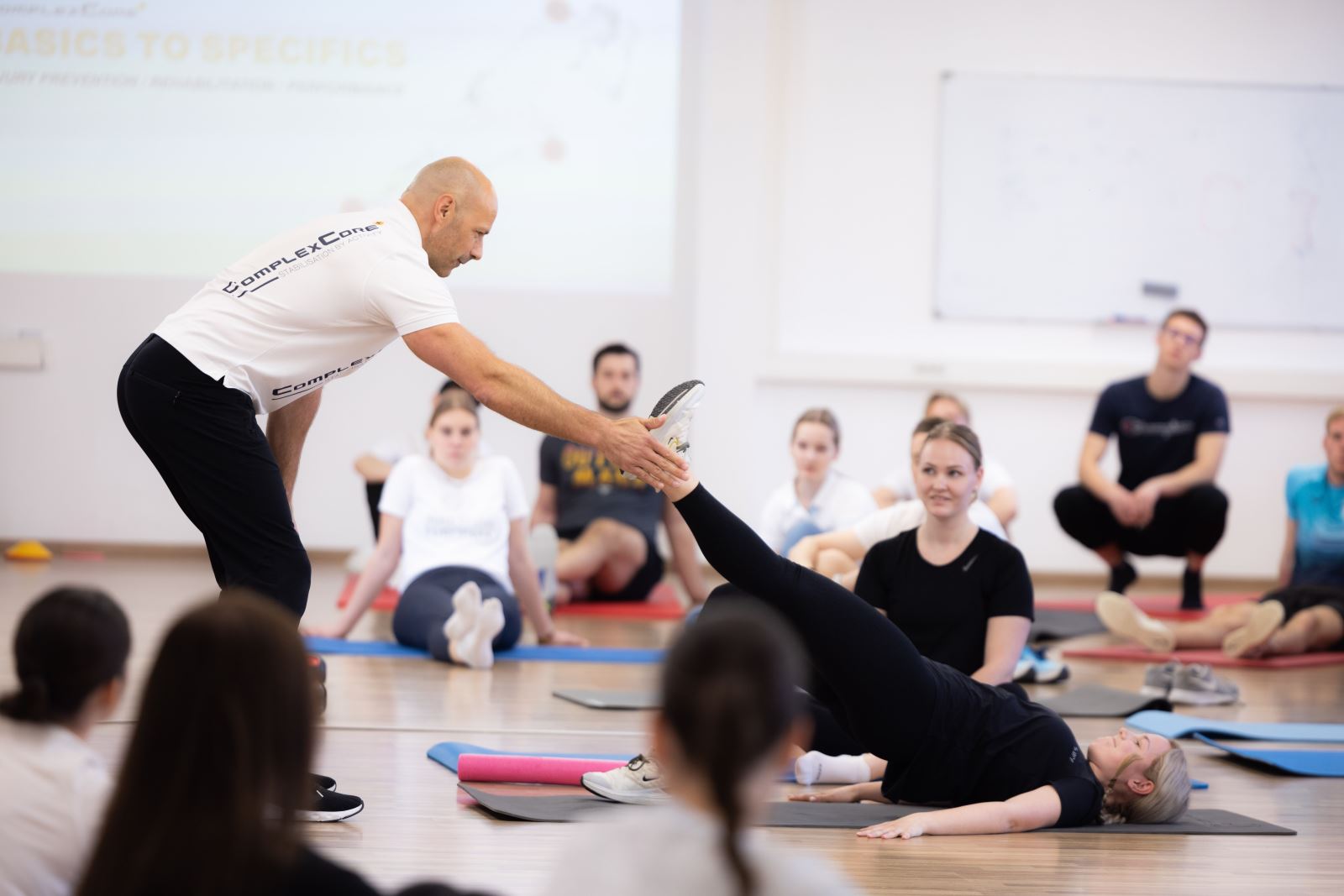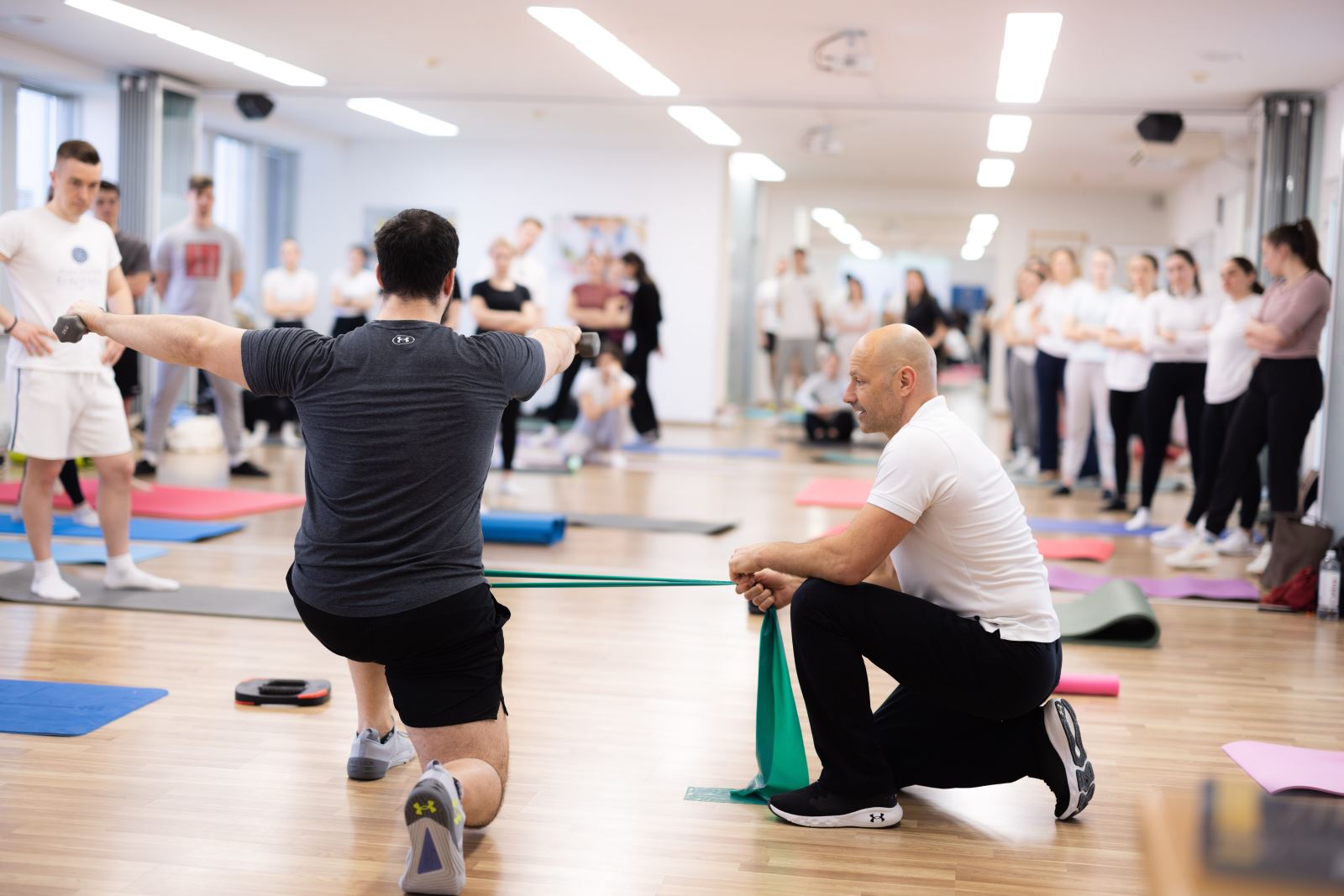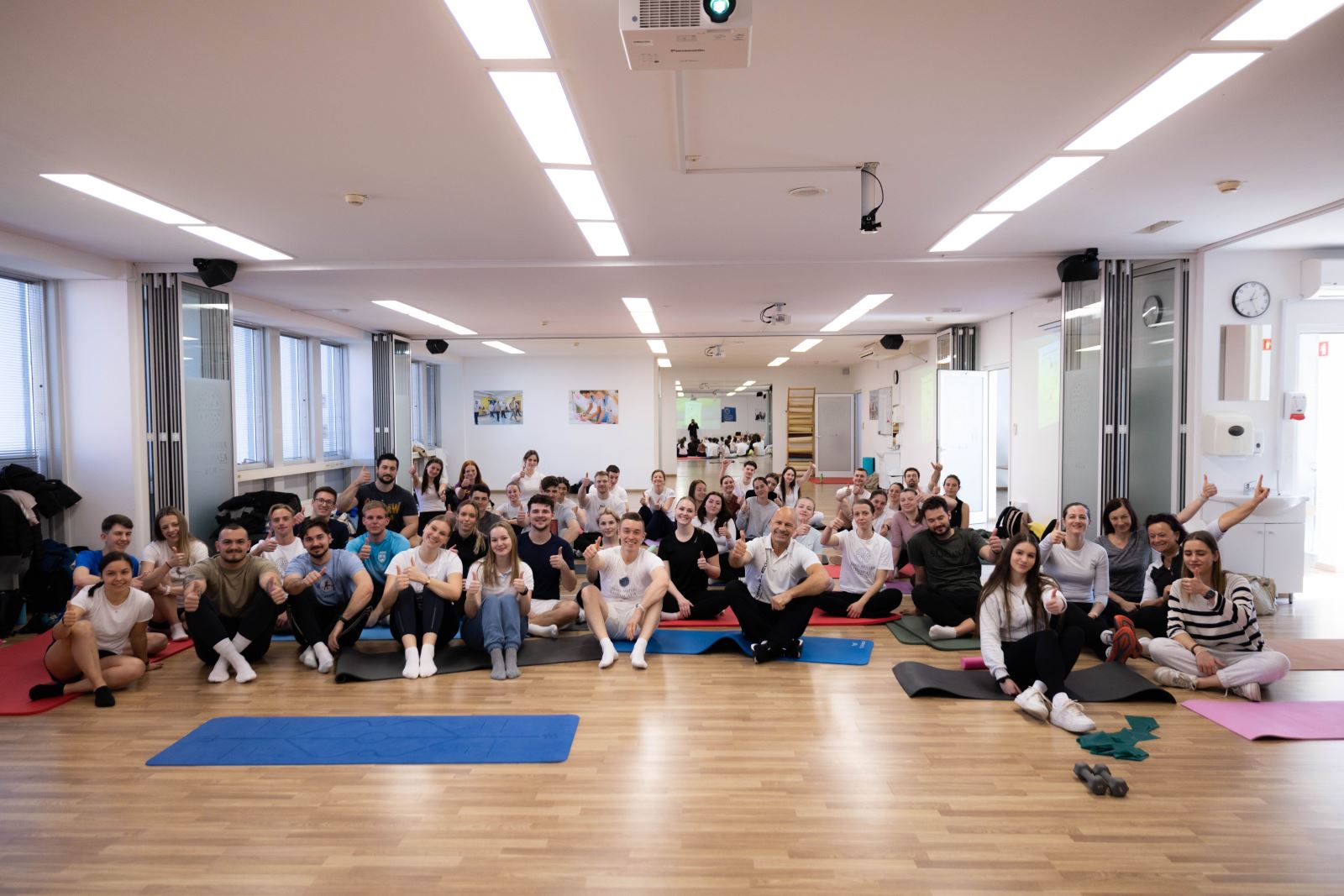
Exclusive Masterclass with Roman Jahoda

How do elite athletes maintain their physical readiness, avoid injuries, and improve their performance? What modern methods do physiotherapists use to help individuals regain strength, mobility, and balance?
These questions, and many more, were addressed during an exclusive masterclass with Roman Jahoda, a renowned physiotherapist, sports therapist, and coach, who has been applying his expertise for years in collaboration with top-level athletes, UEFA referees, the Alinghi sailing team, and Formula 1 drivers—most notably as the personal therapist of Ralf Schumacher.

At the seminar "From Basics to Specifics—Injury Prevention, Rehabilitation, and Sports Performance," held at Alma Mater Europaea University in Maribor and Ljubljana, Jahoda presented his philosophy of movement and physical performance, an approach that goes beyond the traditional boundaries of sports training and rehabilitation.
“Effective training, whether in elite sports, recreational activity, or rehabilitation, cannot be based solely on repeating sport-specific movements or focusing on individual muscle groups. The key to sustainable progress, injury prevention, and overall well-being lies in understanding the human body as a functional whole,” Jahoda emphasized.

He shared practical methods of mobilization, stabilization, functional training, active exercise therapy, and individualized rehabilitation processes with many enthusiastic participants. He emphasized the importance of essential movement components: mobility, flexibility, stability, strength, proprioception, and coordination. These elements are often overlooked in one-sided training programs, leading to compensatory patterns and overload in specific body structures.
“Physiotherapy and the exercise process should not rely solely on symptomatic treatment. Body posture, thoracic spine mobility, hip joint functionality, and muscle coordination all play a crucial role in understanding the root causes of physical problems,” he added.


His approach is structured yet flexible, tailored to each individual’s goals, capabilities, and limitations. According to Jahoda, a therapist or trainer must be able to listen to the body carefully and select the right exercises, appropriate difficulty level, and optimal timing for progress.
“My goal is not only to eliminate pain or improve performance. My goal is for everyone to feel the power and freedom of their own movement,” Jahoda concluded.
Participants gained first-hand insights into the importance of viewing the body as a connected whole and how the proper knowledge and targeted approach can help individuals, athletes, or patients unlock their full potential.



